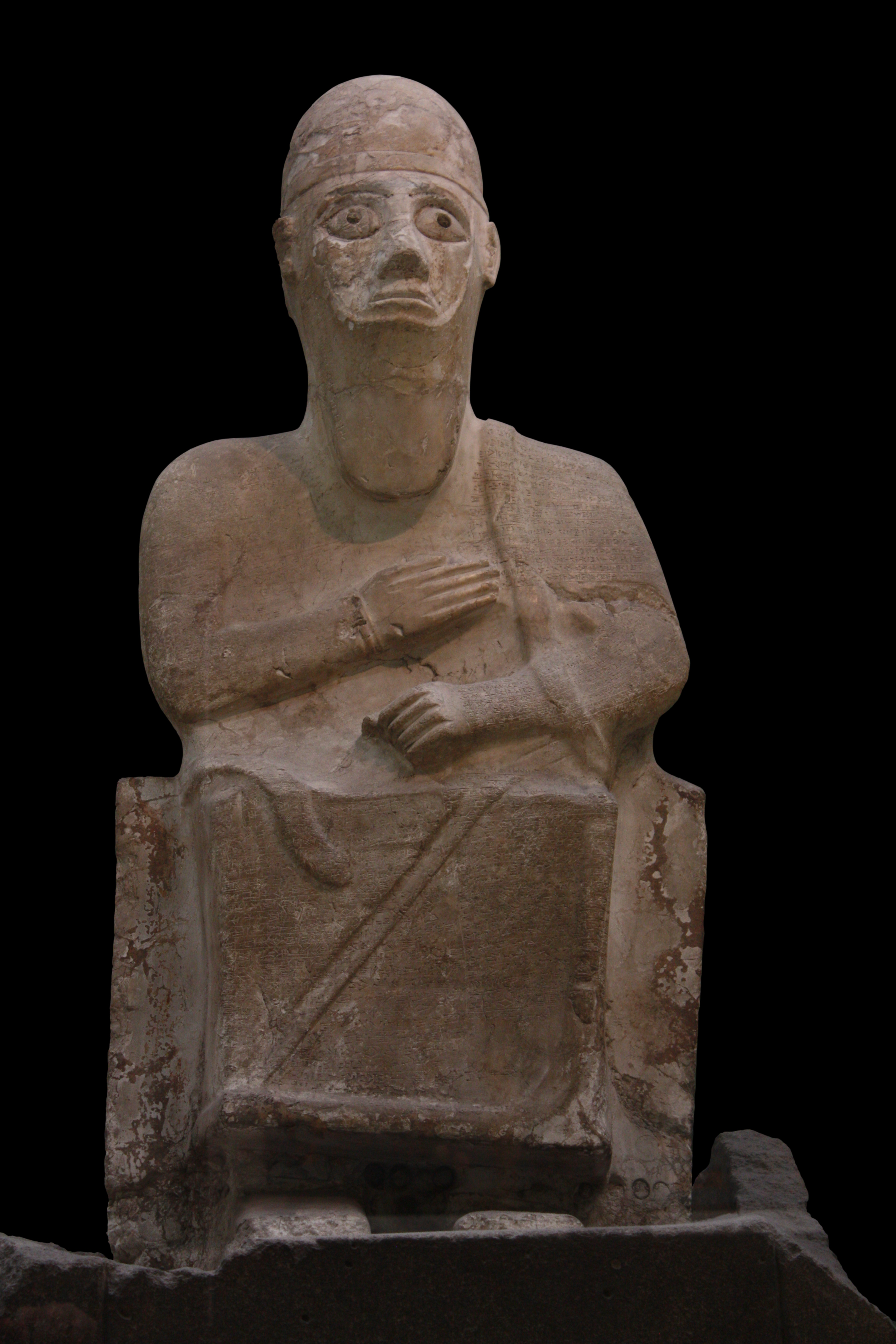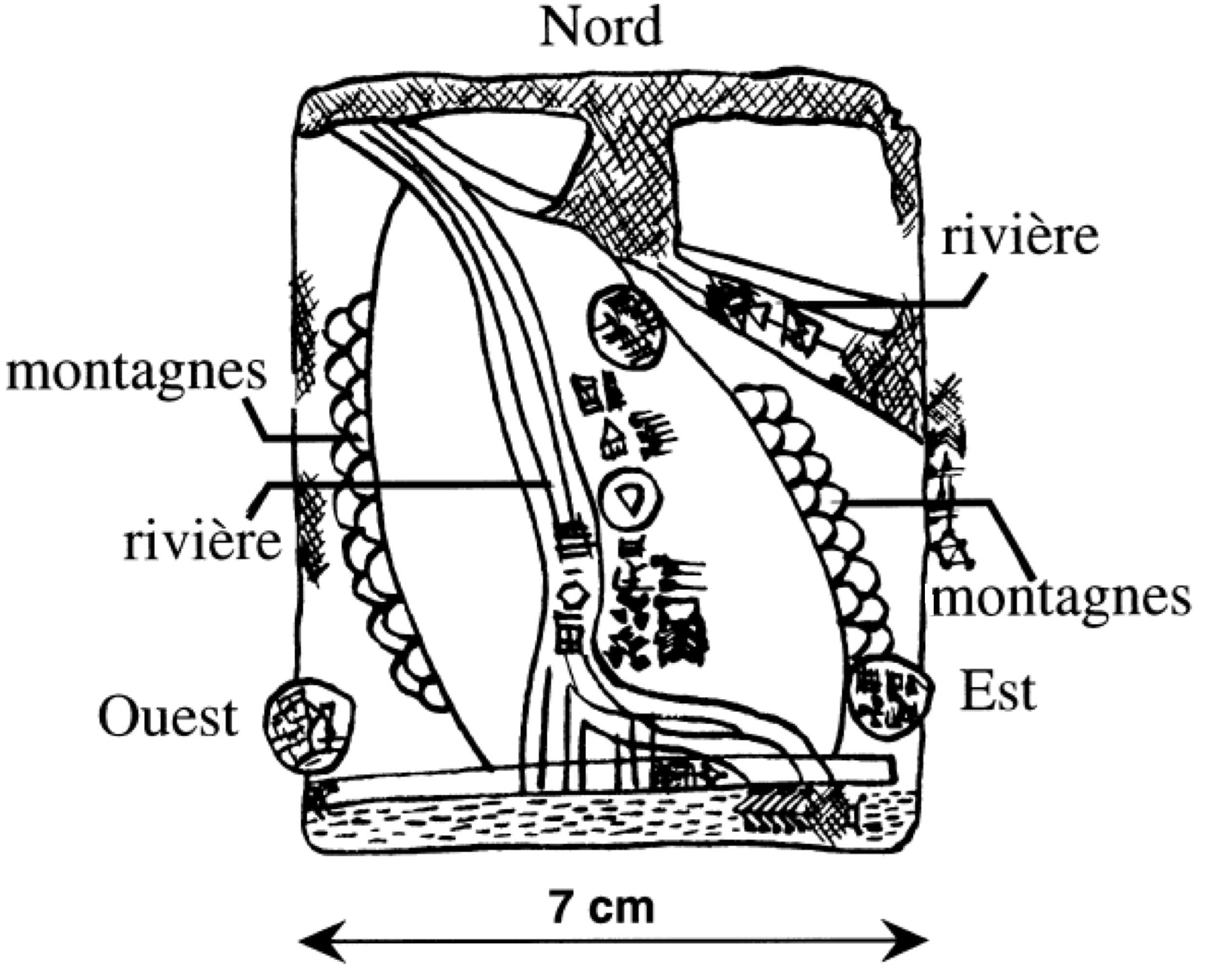|
Barattarna
Barattarna, Parattarna, Paršatar, or Parshatatar was the name of a Hurrian king of Mitanni and is considered to have reigned, as per middle chronology between c. 1510 and 1490 BC by J. A. Belmonte-Marin quoting H. Klengel. Very few records of him are known as sources from Mitanni are rare. Most information we have about the kingdom, especially its early history and kings come from records outside of the state. Dates for the kings can be deduced by comparing the chronology of Mitanni and other states, especially ancient Egypt, at a later date and working back the figures. Information is found in the biography of Idrimi of Alalakh (or Alalah, which became the capital of Aleppo). Barattarna conquered the area and made Idrimi his vassal, Idrimi becoming king of Aleppo according to a treaty that also declared Pilliya, the king of Kizzuwatna, his vassal. Mitanni in his time probably extended as far as Arrapha in the east, Terqa in the south, and Kizzuwatna in the West. Barattarna ma ... [...More Info...] [...Related Items...] OR: [Wikipedia] [Google] [Baidu] |
Idrimi
Idrimi was the king of Alalakh c. 1490–1465 BC, or around 1450 BC. He is known, mainly, from an inscription on his statue found at Alalakh by Leonard Woolley in 1939.Longman III, Tremper, (1991)Fictional Akkadian Autobiography: A Generic and Comparative Study Eisenbraums, Winona Lake, Indiana, p. 60: "...discovered by Sir Leonard Woolley in 1939...Although found in the debris of Level IB (ca. 1200 B.C.), the statue was dated by most scholars back to Level IV (ca. 1500 B.C.)..." According to that inscription, he was a son of Ilim-Ilimma I the king of Halab, now Aleppo, who would have been deposed by the new regional master, Barattarna, king of Mitanni. Idrimi would have succeeded in gaining the throne of Alalakh with the assistance of a group known as the ''Habiru'', founding the kingdom of Mukish as a vassal to the Mitanni state. He also invaded the Hittite territories to the north, resulting in a treaty with the country Kizzuwatna. Jacob Lauinger considers Idrimi as a histori ... [...More Info...] [...Related Items...] OR: [Wikipedia] [Google] [Baidu] |
Mitanni
Mitanni (; Hittite cuneiform ; ''Mittani'' '), c. 1550–1260 BC, earlier called Ḫabigalbat in old Babylonian texts, c. 1600 BC; Hanigalbat or Hani-Rabbat (''Hanikalbat'', ''Khanigalbat'', cuneiform ') in Assyrian records, or ''Naharin'' in Egyptian texts, was a Hurrian-speaking state in northern Syria and southeast Anatolia (modern-day Turkey). Since no histories or royal annals/chronicles have yet been found in its excavated sites, knowledge about Mitanni is sparse compared to the other powers in the area, and dependent on what its neighbours commented in their texts. The Hurrians were in the region as of the late 3rd millennium BC. A king of Urkesh with a Hurrian name, Tupkish, was found on a clay sealing dated c. 2300 BC at Tell Mozan.Salvini, Mirjo. "The earliest evidences of the Hurrians before the formation of the reign of Mittanni." Urkesh and the Hurrians Studies in Honor of Lloyd Cotsen. Urkesh/Mozan Studies Bibliotheca Mesopotamica. Malibu: Undena Publications ( ... [...More Info...] [...Related Items...] OR: [Wikipedia] [Google] [Baidu] |
Alalakh
Alalakh (''Tell Atchana''; Hittite: Alalaḫ) is an ancient archaeological site approximately northeast of Antakya (historic Antioch) in what is now Turkey's Hatay Province. It flourished, as an urban settlement, in the Middle and Late Bronze Age, c. 2000-1200 BC. The city contained palaces, temples, private houses and fortifications. The remains of Alalakh have formed an extensive mound covering around 22 hectares. In Late Bronze Age, Alalakh was the capital of the local kingdom of Mukiš. The first palace was built around 2000 BC, and likely destroyed in the 12th century BC. The site was thought to have never been reoccupied after that, but archaeologist Timothy Harrison showed, in a (2022) lecture's graphic, it was inhabited also in Amuq Phases N-O, Iron Age, c. 1200-600 BC.Harrison, Timothy, Lynn Welton, and Stanley Klassen, (13 July 2022)"Highway to Science: The Tayinat and CRANE Projects" ARWA Association, Lecture min. 6:58, n the graphic "Iron Age, Ca. 1200-600 BCE, Amuq ... [...More Info...] [...Related Items...] OR: [Wikipedia] [Google] [Baidu] |
Kizzuwatna
Kizzuwatna (or Kizzuwadna; in Ancient Egyptian ''Kode'' or ''Qode''), was an ancient Anatolian kingdom in the 2nd millennium BC. It was situated in the highlands of southeastern Anatolia, near the Gulf of İskenderun, in modern-day Turkey. It encircled the Taurus Mountains and the Ceyhan River. The centre of the kingdom was the city of Kummanni, in the highlands. In a later era, the same region was known as Cilicia. Land The country possessed valuable resources, such as silver mines in the Taurus Mountains. The slopes of the mountain range are still partly covered by woods. Annual winter rains made agriculture possible in the area at a very early date (see Çatalhöyük). The plains at the lower course of the Ceyhan River provided rich cultivated fields. People Several ethnic groups coexisted in the Kingdom of Kizzuwatna. The Hurrians inhabited this area at least since the beginning of the 2nd millennium BC. The Hittite expansion in the early Old Kingdom period (under Hat ... [...More Info...] [...Related Items...] OR: [Wikipedia] [Google] [Baidu] |
Euphrates River
The Euphrates () is the longest and one of the most historically important rivers of Western Asia. Tigris–Euphrates river system, Together with the Tigris, it is one of the two defining rivers of Mesopotamia ( ''the land between the rivers''). Originating in Turkey, the Euphrates flows through Syria and Iraq to join the Tigris in the Shatt al-Arab, which empties into the Persian Gulf. Etymology The Ancient Greek form ''Euphrátēs'' ( grc, Εὐφράτης, as if from Greek εὖ "good" and φράζω "I announce or declare") was adapted from Old Persian 𐎢𐎳𐎼𐎠𐎬𐎢 ''Ufrātu'', itself from Elamite language, Elamite 𒌑𒅁𒊏𒌅𒅖 ''ú-ip-ra-tu-iš''. The Elamite name is ultimately derived from a name spelt in cuneiform as 𒌓𒄒𒉣 , which read as Sumerian language, Sumerian is "Buranuna" and read as Akkadian language, Akkadian is "Purattu"; many cuneiform signs have a Sumerian pronunciation and an Akkadian pronunciation, taken from a Sumerian word a ... [...More Info...] [...Related Items...] OR: [Wikipedia] [Google] [Baidu] |
15th-century BC Deaths
The 15th century was the century which spans the Julian dates from 1 January 1401 ( MCDI) to 31 December 1500 ( MD). In Europe, the 15th century includes parts of the Late Middle Ages, the Early Renaissance, and the early modern period. Many technological, social and cultural developments of the 15th century can in retrospect be seen as heralding the "European miracle" of the following centuries. The architectural perspective, and the modern fields which are known today as banking and accounting were founded in Italy. The Hundred Years' War ended with a decisive French victory over the English in the Battle of Castillon. Financial troubles in England following the conflict resulted in the Wars of the Roses, a series of dynastic wars for the throne of England. The conflicts ended with the defeat of Richard III by Henry VII at the Battle of Bosworth Field, establishing the Tudor dynasty in the later part of the century. Constantinople, known as the capital of the world an ... [...More Info...] [...Related Items...] OR: [Wikipedia] [Google] [Baidu] |
Shaushtatar
Shaushtatar (also spelled Šauštatar) was a king of the Hurrian kingdom of Mitanni in the fifteenth century BC. Two tablets of Shaushtatar (AIT 13 and AIT 14), legal decisions, were found at Alalakh. They mention Niqmepa, the king of Alalakh, providing a synchronism. A tablet of Shaushtatar was found at Tall Bazi, granting land. Invasion of Assyria Shaushtatar was the son of Parshatatar. By the time he ascended the throne ca. the 15th century BC, his father had installed Hurrian client kings in a number of cities, making it easier for Shaushtatar to make Mittani a Mesopotamian power. Now freed from the constant threat undergone by Mitanni of the Egyptians, Shaushtatar turned his attention toward Assyria. He invaded Assyria and sacked and looted its capital, Assur. [...More Info...] [...Related Items...] OR: [Wikipedia] [Google] [Baidu] |
Shuttarna I
Shuttarna I was an early king of the Mitanni. His name is recorded on a seal found at Alalakh. The inscription reads "son of Kirta" and is the only reference about this king yet discovered.Jankowska, N. B.. "11. Asshur, Mitanni, and Arrapkhe". Early Antiquity, edited by I. M. Diakonoff, Chicago: University of Chicago Press, 2013, pp. 228–260 He would have reigned at the end of 16th century BC (middle chronology). See also *Mitanni Mitanni (; Hittite cuneiform ; ''Mittani'' '), c. 1550–1260 BC, earlier called Ḫabigalbat in old Babylonian texts, c. 1600 BC; Hanigalbat or Hani-Rabbat (''Hanikalbat'', ''Khanigalbat'', cuneiform ') in Assyrian records, or ''Naharin'' in ... References Hurrian kings 15th-century BC people {{AncientNearEast-bio-stub ... [...More Info...] [...Related Items...] OR: [Wikipedia] [Google] [Baidu] |
Nuzi
Nuzi (or Nuzu; Akkadian Gasur; modern Yorghan Tepe, Iraq) was an ancient Mesopotamian city southwest of the city of Arrapha (modern Kirkuk), located near the Tigris river. The site consists of one medium-sized multiperiod tell and two small single period mounds. History The site showed occupation as far back as the late Uruk period. The city, then named Gasur, was founded in the third millennium during the time of the Akkadian Empire. In the middle of the second millennium the Hurrians gained control of the town and renamed it Nuzi. The history of the site during the intervening period is unclear, though the presence of a few cuneiform tablets from the Old Assyrian Empire indicates that trade with nearby Assur was taking place. After the fall of the Hurrian kingdom of Mitanni to Ashur-uballit I of the Middle Assyrian Empire, Nuzi went into gradual decline. Note that while the Hurrian period is well known from full excavation of those strata, the earlier history is not as reliab ... [...More Info...] [...Related Items...] OR: [Wikipedia] [Google] [Baidu] |
Arrapha
Arrapha or Arrapkha (Akkadian: ''Arrapḫa''; ar, أررابخا ,عرفة) was an ancient city in what today is northeastern Iraq, thought to be on the site of the modern city of Kirkuk. In 1948, ''Arrapha'' became the name of the residential area in Kirkuk which was built by the North Oil Company as a settlement for its workers. History The first written record of Arrapha is attested from the Neo-Sumerian Empire (c. 22nd to 21st century BC). Ancient Arrapha was a part of Sargon of Akkad's Akkadian Empire (2335–2154 BC), and the city was exposed to the raids of the Lullubi during Naram-Sin's reign. The city was occupied around 2150 BC by the Gutians. Arrapha was the capital of the short-lived Guti kingdom (Gutium) before it was destroyed and the Gutians driven from Mesopotamia by the Neo-Sumerian Empire c. 2090 BC. Arrapha became a part of the Old Assyrian Empire (c. 2025–1750 BC) before Hammurabi briefly subjected Assyria to the short-lived Babylonian Empire, after which ... [...More Info...] [...Related Items...] OR: [Wikipedia] [Google] [Baidu] |
Thutmosis I
Thutmose I (sometimes read as Thutmosis or Tuthmosis I, Thothmes in older history works in Latinized Greek; Egyptian language, Ancient Egyptian: ''wikt:ḏḥwtj, ḏḥwtj-wikt:ms#Egyptian, ms'', ''Tʼaḥawtī-mīsaw'', , meaning "Thoth is born") was the third pharaoh of the Eighteenth Dynasty of Egypt, 18th Dynasty of History of Ancient Egypt, Egypt. He received the throne after the death of the previous king, Amenhotep I. During his reign, he campaigned deep into the Levant and Nubia, pushing the borders of Egypt farther than ever before in each region. He also built many temples in Egypt, and a tomb for himself in the Valley of the Kings; he is the first king confirmed to have done this (though Amenhotep I may have preceded him). Thutmose I's reign is Thutmose I#Dates and length of reign, generally dated to 1506–1493 BC, but a minority of scholars—who think that astrological observations used to calculate the timeline of ancient Egyptian records, and thus the reign of Thu ... [...More Info...] [...Related Items...] OR: [Wikipedia] [Google] [Baidu] |





